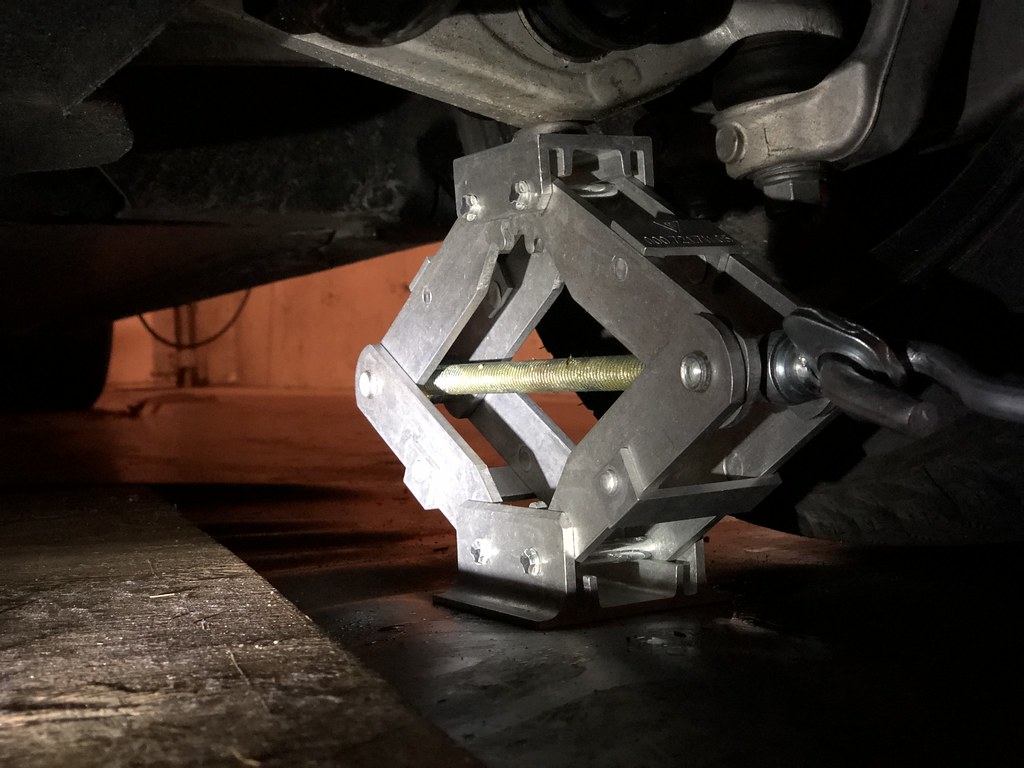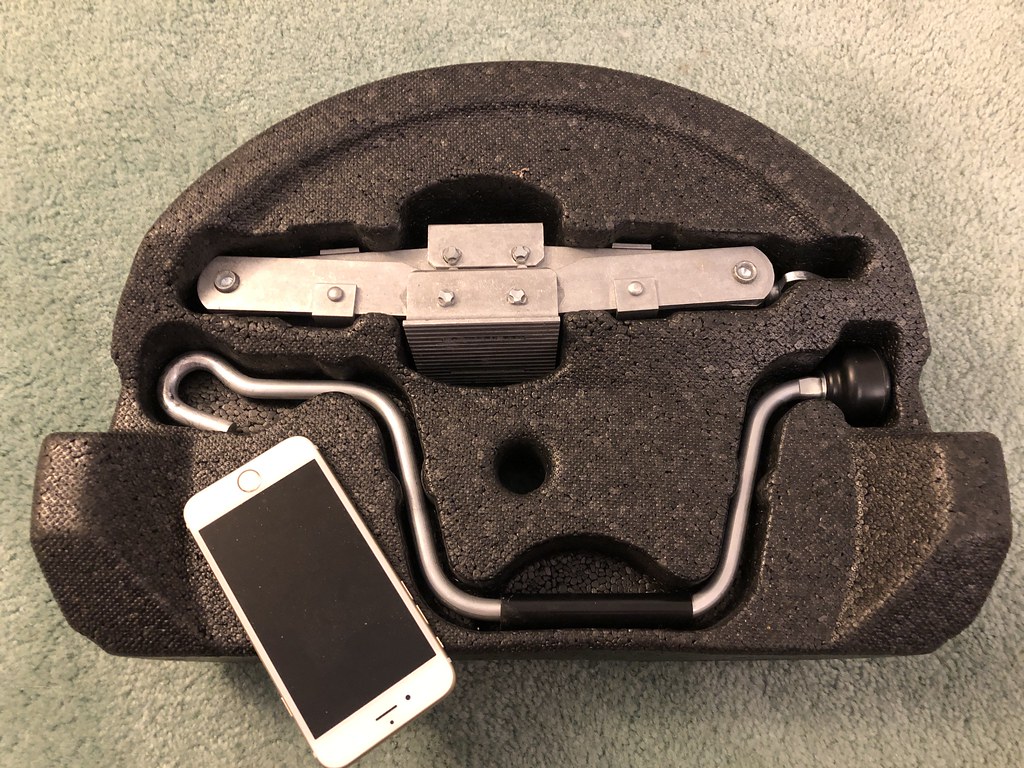melvladimir
Member
And this is with normal tire? So with a flat tire, it will be ~80mma little more than 100 mm of clearance to the ground at the shock mount
You can install our site as a web app on your iOS device by utilizing the Add to Home Screen feature in Safari. Please see this thread for more details on this.
Note: This feature may not be available in some browsers.
And this is with normal tire? So with a flat tire, it will be ~80mma little more than 100 mm of clearance to the ground at the shock mount
Unless it’s a total blowout....it might be possible to reinflate the tire just long enough to get a jack under itAnd this is with normal tire? So with a flat tire, it will be ~80mm
Yes, that photo was taken with the tire fully inflated.And this is with normal tire? So with a flat tire, it will be ~80mm
If you jack the car up by either of the front or rear control arms, my universal adapter fill allow secure placement of either aluminum or steel jack stands in the official Tesla jacking sockets. Unlike some of the awkward multi-bolt clamp on adapters that I've seen offered by others, mine only requires drilling a centered 5/16 inch hole about one inch deep into the top. Both the aluminum and the malleable iron tops are easy to drill into.After jacking up an M3...does anyone know the safe places to put the jack stands ?
I thought I'd heard it wasn't a good idea to jack the car so high that both wheels (on one side) came off the ground - on account of torsional forces on the car body cracking the glass roof. A non-issue ?The jack with it's extended base is very stable and raises high enough on the front socket to lift not only the front wheel of the ground, but also the rear wheel. Basically, the assembly could be used to rotate tires from the front to back and vise versa.
Man, this car is HARD to jack up - using that red Torin scissors jack (with Mike's adapter) - but I don't imagine any other scissors jack would be much easier. Does make me wish it had a hex drive, so could use a rachet wrench (instead of that awkward hinged handle with a hook on the end). MYLR is only half again as heavy as my Outback, but it sure seems a whole lot harder.
I thought I'd heard it wasn't a good idea to jack the car so high that both wheels (on one side) came off the ground - on account of torsional forces on the car body cracking the glass roof. A non-issue ?
I hope it's ok, because as difficult as the scissors jack is, I'd love to be able to rotate using my platform jack and nothing else. Assuming front-back (non-crossed) rotation is ok.
Modern Spare provide a decent scissor and ratchet wrench with their spare wheels.I've been hunting around for a nice jack for the Model 3. I don't plan on carrying a spare (yet) but I do have a nice tire repair kit and I have repaired many tires. It's not always so easy to repair a tire on the car. Especially if it's 5F out. I want the ability to rotate the wheel or remove it to ease repair.
I went through several Amazon returns. Most Scissors Jack are absolute Chinese crap unless you buy some OEM one for another vehicle. I had almost settled on an electric hydraulic jack that worked great until I realized that it would be to tall if I had a flat.
I found this on eBay. It's an old OEM Porsche Jack. There are tons of them on eBay, this one was mint.
It appears all the Porsches that used this vintage jack are around 3000 lbs. Model 3 is 4000 lbs.
I think because they are so light, strong and compact there is a market for them. There are probably 50 on ebay.
It is the only aluminum scissor jack I could find.
It is rated for 1000 Kg (2200 lbs).
It weighs nothing (40 oz !!), it is very well made.
It will jack from ~2.5" to ~10.5"
You can probably use it fine on the body, I plan to only jack under the lower control arm (much easier, safer and only needs 2 inches of lift).
There is a nub on top that I plan to remove. If you wanted it for the body you could trim that nub to fit exactly.
Not sure how much lift you need on the body (part of the reason I hate jacking up from the body).
But you could raise the jack on something to bring it flush before jacking. The jack has 8" of throw (not a lot).
When sizing a jack you want it to go from flat tire on ground to fixed tire off ground.
I ordered an extension crank from amazon. It probably weighs more than the jack.
This image is with it lifting the Model 3 front wheel.

I might be able to use this foam insert as is, in the lower trunk to keep it in place. (iPhone 6s reference, not a plus)

That’s exactly how I use to jack my model 3.Yes, that photo was taken with the tire fully inflated.
The rear control arm under the shock mount appears to have adequate clearance as this photo shows.
View attachment 966614
I would still not depend on the small surface area of the top of the jack not slipping off as the car moves when the jack is raised.
The only guaranteed method of safe jacking is apparently with a secure post that fits and locks into the top pf the jack's lifting surface. I don't know about the particular jack that you quoted, because I am not able to see if a flat surface can be exposed. If there ia a rivet holding as swiveling saddle, it can be drilled out to take the post on an adapter such as mine. Hope this helps.
Lord, so much stuff to buy - to be prepared for a flat. Ah well, thanks for the excellent suggestions, just bought 'em both.Not hard, if you get this adapter.
I've used it with my old Craftsman 1/2 inch drive ratchet wrench and this lug wrench socket that will also work with the wheel lug nuts,



